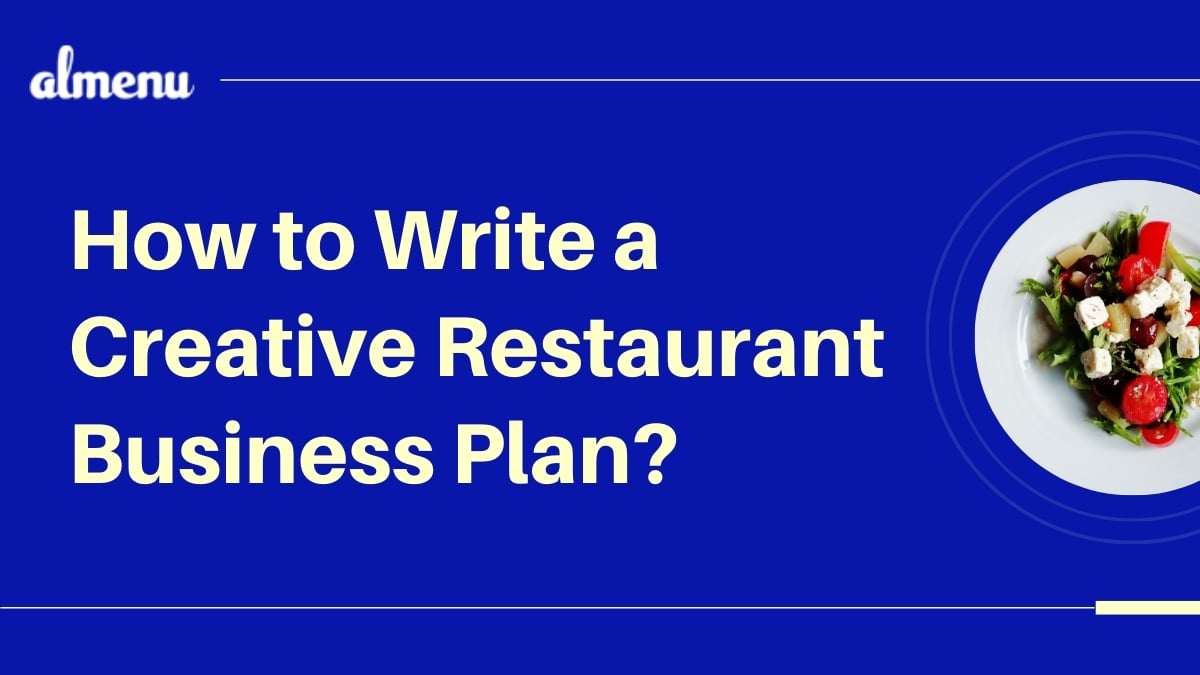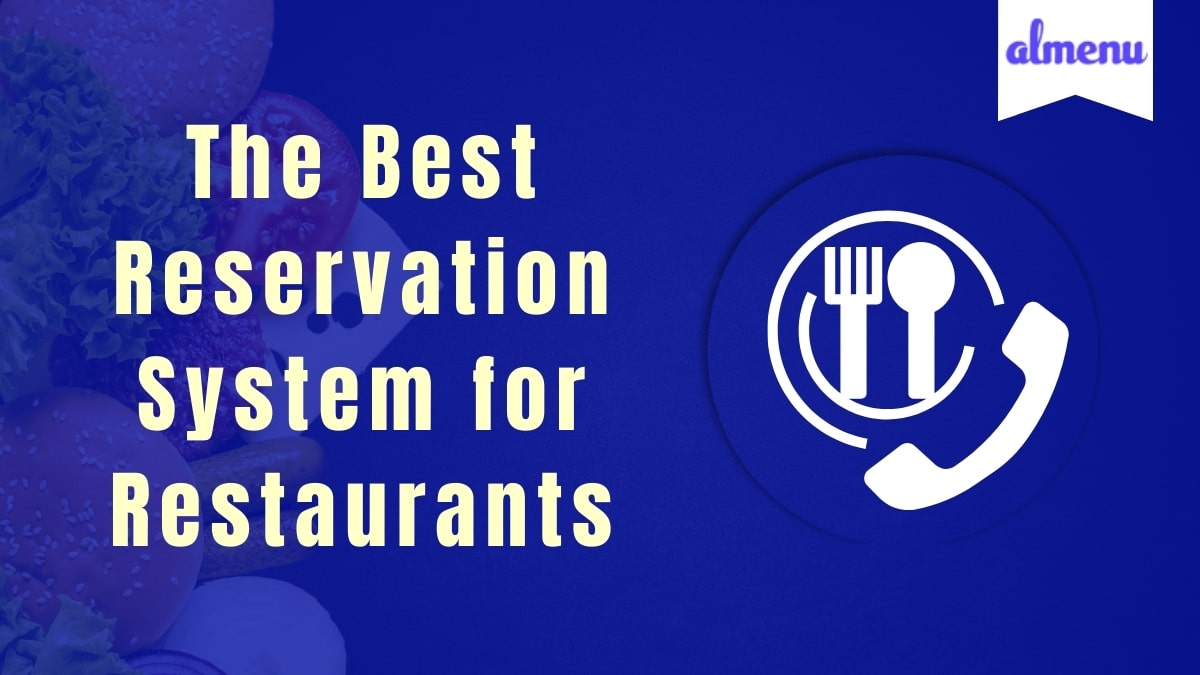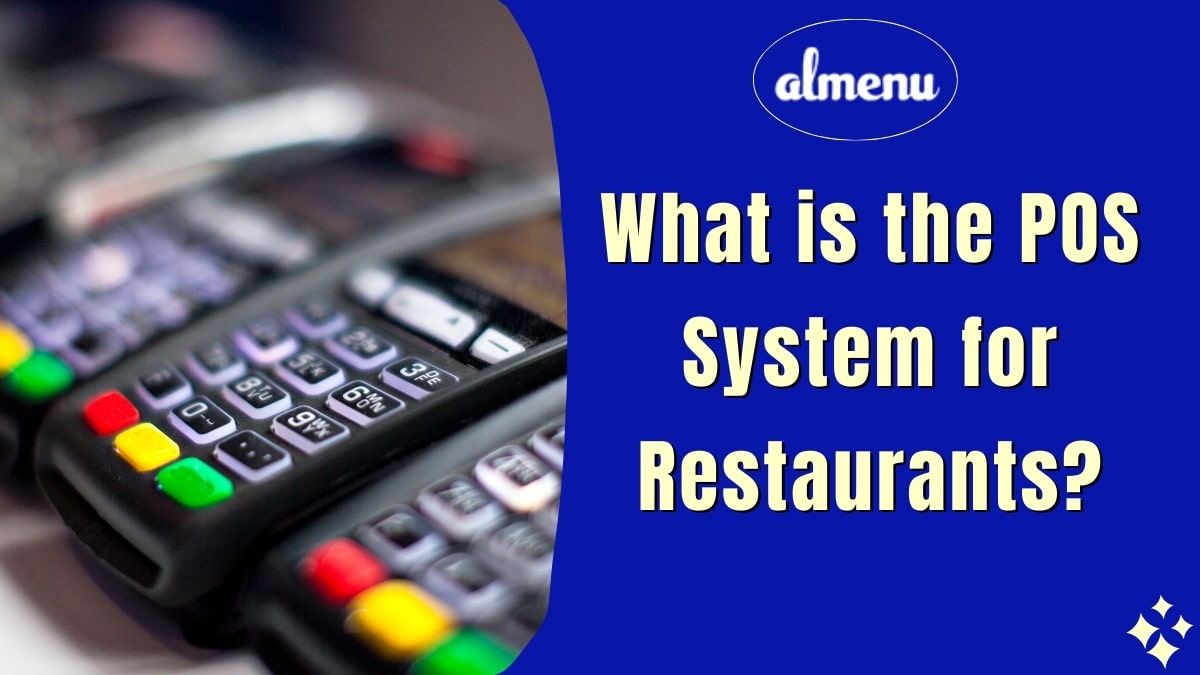The first step in starting a restaurant business is to understand your restaurant and what you intend to create and sell. The restaurant business plan is used as a guide and roadmap for the future development of your restaurant business. It is a model for operating a restaurant.
It is more like a guide for you to develop your own to understand how to run your restaurant business. Generate a business plan from it and share it with third parties such as investors and banking authorities. Although it is mainly used for internal use, you need to write a restaurant business plan correctly.
It must be organized in a simple, understandable, logical, and feasible way. In the long run, your restaurant plan must also be sustainable. In addition, you need to maintain the content of your restaurant.
When writing a business plan for your restaurant, you should carefully consider all opportunities and obstacles in the restaurant business. But before putting your dream of opening a restaurant into practice.
Would you please read this in-depth article on how to start a restaurant business? This article will be a comprehensive guide to “How to write a business plan for a restaurant.
What is a Restaurant Business Plan?
Roger Fields defined a restaurant business plan in his book “Digital Restaurant Success” as “a concise and clear way to communicate to potential investors what you have done and convince them of the feasibility and potential profitability of the idea.
From Your restaurant”. In other words, it is a way to highlight what you are preparing for the restaurant’s opening and what you intend to do, especially in terms of market research and the achievement of financial forecasts and goals. They are looking to understand a company better, its concept, and its competitive advantages.
The Importance of a Restaurant Business Plan
The business plan provides business owners, stakeholders, investors, and leaders with organized guidance on how to turn the vision of the new restaurant into reality, ensuring that nothing is overlooked as you grow your business.
When you face construction, permitting, staffing, and other operational pressures, your business plan will serve as a roadmap to help you stay focused. Moving on without people will make the chaotic world of restaurant openings more challenging to navigate.
The restaurant business plan is also critical to securing potential investors. As you know, opening a new restaurant requires attracting external funding from hotel investors or people who want to be your silent partner.
Before they can invest in your dreams, they must see that you have a concrete plan for success. The business plan shows investors that you have considered all costs and all possible scenarios. It gives you a description of your project and why and how it succeeded.
How Can I Write a Restaurant Business Plan?
Whether this is your first business plan or your 10th business plan, you always need to use a template designed for your industry.
This restaurant business plan template contains all the most essential parts of your business plan. You can download a copy of the customizable business plan template here and then continue reading to understand the key elements that make a restaurant business plan successful.
Top 11 Critical Factors of a Restaurant Business Plan
Executive Overview
The restaurant business plan should always start with an executive summary. The executive summary is an introduction to your business plan and an overview of the entire idea. The main goal of the executive summary is to attract readers (usually investors) to the rest of your business plan.
The Elements of the Executive Summary Include:
- Mission statement
- Proposed concept
- Implementation
- A brief introduction to potential costs
- Expected return on investment
The executive summary is essential for those seeking investors to finance their projects.
Company Description
It is part of the restaurant’s business plan, in which you can fully introduce the company. This section starts with the name and location of the restaurant you want to open, contacts, and other relevant information.
It also includes details of the owner and a brief description of your experience. The second part of the business description should highlight the restaurant’s legal status and describe the restaurant’s short- and long-term goals.
Would you please provide brief market research showing that you understand the trends in the regional food industry and why restaurants will succeed in this market?
Market Analysis
The market analysis part of a restaurant business plan is generally divided into three parts.
Industry Analysis:
What is your target market? Who will your restaurant serve? This section aims to explain to investors your target market and why you think customers will choose your restaurant over others.
Competitor Business Overview:
It is essential to study your competitors to do this. A reality Which restaurants have established a customer base in the area?
Write down everything from prices, opening hours, and menu design to the interior of the restaurant. The next step is to explain to your investors how your restaurant business will be different.
Marketing Analysis
Your investors will want to know That What your plans are to market your restaurant business. How is your marketing activity different from what others are already doing? How do you plan to ensure your target market? What kind of discount will you offer to guests? Make sure to list everything.
Menu
By far, the essential element in launching a restaurant is the menu. Without it, your restaurant will not be able to provide any services. You may not have the final version yet, but you should at least try to make a model for the restaurant business plan.
Add your logo to the model and choose an attractive design where you can see what you are wearing. If you have trouble designing a menu or don’t want to pay the designer, there are many online resources to help you.
However, the critical element of your example menu should be price. Your price should reflect your cost analysis to investors. It will allow them to understand the target price of your restaurant better. Even from the beginning, you will quickly see the importance of menu engineering.
Employees
The company description section of the restaurant’s business plan briefly introduces everyone’s information to the restaurant owner. This part should fully develop the restaurant management team.
Investors don’t expect you to choose your entire team right now, but you should at least have a few people present. Use the talents you have selected so far to highlight the comprehensive work experience each person brings.
Restaurant Design
The design part of the restaurant business plan is where you can show your ideas and ideas to investors. If you don’t have a professional rendering of the restaurant, that’s okay. Instead, create a mood chart to convey your vision.
Find images with similar beauty to the photos you are looking for in the restaurant. Restaurant design goes beyond aesthetics and should include everything from restaurant software to kitchen equipment.
Location
The location you choose for the restaurant should match your target market. At this point, you may not have booked a precise location.
When describing potential areas to your investors, you should include as much information as possible about each place and why it is best for your restaurant. Mention everything from square feet to typical demographic data.
Market Overview
The market overview part is closely related to the market analysis part of the restaurant business plan. In this section, analyze in detail the micro and macro conditions of the area where you want to open a restaurant, analyze the current economic conditions that may make it difficult to open a restaurant, and how you plan to respond. Mention all the restaurants that might be competitive and what your strategy is to differentiate yourself.
Marketing
Since the restaurant opens on the left and travels today, investors will want to know how you will communicate with the world about your restaurant. The marketing and advertising section should detail how you plan to market your restaurant before and after opening. In addition to any plans, you may also need to hire a public relations firm to help promote them.
External Help
To make your restaurant a reality, you will need a lot of help. List any external companies or software you plan to hire to start and operate your restaurant.
It includes everything from accountants and designers to vendors who help your restaurant run better, such as POS systems and restaurant reservation systems. Explain to your investors the importance of each item and what they will do for your restaurant.
Financial Analysis
The most important part of a restaurant business plan is the financial part, so you should make sure to hire professional help. Hiring a well-trained accountant can help you with financial estimates and give you a realistic view of owning a restaurant.
You should prepare some information so that the accountant can perform this step more efficiently. They will want to know how many seats your restaurant has, the average number of checks per table, and how many guests you plan to sit in each day.
In addition, it can help to estimate the food cost of various menu items. It can be done quickly using the free food cost calculator.
Restaurant Business Plan Samples
Take a look at these sample restaurant business plans to see which style is best for your restaurant type. Once you find one or two examples you like, start creating your models with similar structure, layout, and language.
Before you know it, you will prepare your restaurant business plan. If you feel overwhelmed and look at a blank Word document, some online programs can help you. Programs such as Live Plan are charged monthly and simplifies the process of creating a restaurant business plan by guiding you step by step through each part and providing you with questions and examples.
Example of a Bar or Casual Restaurant Business Plan
As the name suggests, the Quick Business Plan is another resource for quickly preparing the business plan you need.
They pay particular attention to the business plans of restaurants and bars, which understand the essence of how the restaurant will operate and succeed. blog.Almenu.io also specializes in providing business plans for sports bars.
Example of a Fast-Food Restaurant Business Plan
Although the premise of fast-food restaurants seems obvious, even fast-food restaurant owners need a business plan to prove their ideas. blog.Almenu.io is an excellent resource for sample fast food restaurant business plans, covering everything from products and services to facilities and locations.
Example of a BBQ Restaurant Business Plan
Profitable Venture has an excellent example of a barbecue business plan. They did a thorough job, detailing each role they planned to hire and how that role would contribute to the restaurant, and formulated a forward-looking expansion plan to show their long-term involvement.
Example of a Breakfast Restaurant Business Plan
Since the University of Nevada in Las Vegas released Sunshine Cafe: Breakfast Restaurant Business Plan in 2011, it has been a comprehensive resource for designing their breakfast business plan.
The document details how the restaurant’s business plan works and provides convincing evidence of why they are so crucial in the first place. The newspaper said: “As many as 800,000 new businesses are opened every year in the United States.
He explained, “It is estimated that 50% of the restaurants failed, and some estimate that 90% of the restaurants died. It is poor planning and a lack of start-up funds. Research has shown that business plans can help reduce this risk when planning and helping small businesses raise funds.
Adding such content to your restaurant business plan will show investors that you are Serious. Run a successful and profitable business and plan to learn from the mistakes of others.
Marketing Strategy
A comprehensive business plan includes a reliable marketing plan. Investors and bankers want to know that you have an active program to grow your business. You can’t rely on a fad and simple word-of-mouth marketing just because some restaurants (but not many) open their doors and achieve immediate success.
Use this section to describe your restaurant’s marketing strategy before and after. Open the door. Separate your grand opening marketing plan from ongoing marketing. An introductory summary of the marketing concepts that will guide your marketing plan.
This introduction should convince the reader that there is a workable and well-thought-out plan. Use enthusiasm and descriptive methods to express the program. Over the years, restaurant owners have found creative ways to market their concepts. Some techniques you can consider are:
Build a Customer Database
The cornerstone of direct marketing is to create a customer database. Operators use imaginative strategies to collect names such as business cards or promotions that attract guests to register.
Frequent Diner Programs
Also known as loyalty programs, automatic, frequent dinner programs are now available in many POS (point of sale) systems. There are also multiple services to help you track and reward repeat customers.
Email Campaign
Over the years, email as a marketing tool has become a growing phenomenon. Unfortunately, spammers have infiltrated this market, making everyone dismissive. However, email can be an essential part of your direct marketing plan.
It’s cheap and quick without the time and expense associated with creating and distributing banner ads. Promotions can include monthly newsletters, specials, announcements, etc.
Direct-mail Campaigns
Direct mail is still a very effective tool for reaching new customers. It can also be very effective when combined with a well-maintained customer database. Simple practices, such as mailing dates and anniversary cards to existing customers can help build customer loyalty.
Community/Charity Involvement
Community participation helps to build awareness and loyalty. So, the Diners tend to patronize places that give back to the community.
Sponsoring charities has always been a great way to support your restaurant and help others. Donations can be financial or use your resources, such as your meeting banquet hall or event service team. Other community efforts include supporting local sports teams, churches, and fundraising events.
We are Building Business Relationships
Building strong business relationships can make a lot of money for motivated homeowners. You can generate visitor traffic by establishing a relationship with the hotel concierge.
Strategic relationships with major employers can help attract lunch traffic to employees or executive suites. When you know who is booking catering services, catering revenue will increase.
Delivering food to local businesses during lunch allows them to save time conveniently, help promote your restaurant, and help improve your bottom line.
Four-walls’ Marketing
Internal marketing is one of the most effective tools to maintain the return rate of existing guests. Find ways to promote your restaurants from within, such as table tents, menu insertions, displays or signs, suggestive sales strategies, or frequent restaurant promotions.
Public Relations (PR)
Effective public relations require creativity and work. You can choose to handle this aspect of selling yourself or hire a public relations firm—no matter which method you select.
The standard and expectation are that everyone at work expects to play in their games every day. The job of each restaurant is essential and has a noble purpose-the mission of the restaurant is to delight the guests and encourage them to return to their friends and family.
Advertising
All restaurants advertise in one way or another. A simple sign with the name of your restaurant is an advertisement. Whether you support advertising or not, you should outline your plan here.
Some operators may use this section to express opinions against excessive advertising but strengthen other marketing techniques.
Either way, investors or bankers will be interested in your point of view because advertising can be a considerable expense.
Web-based Marketing
Last but not least, in this market, you should describe how you will use your website, internet, and social media to promote your business.
Every successful restaurant needs a website because this is usually the first place where potential customers risk evaluating your concept.
Facebook and even YouTube have become the standard arsenal of start-up restaurant marketing. It would help if you also considered how to deal with online discount programs and user review sites.





